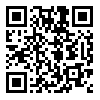Received: 2015/03/3 | Accepted: 2015/04/19 | Published: 2016/01/10
URL: http://ijwph.ir/article-1-480-en.html
BibTeX | RIS | EndNote | Medlars | ProCite | Reference Manager | RefWorks
Send citation to:
2- “Psychosomatics Research Center” and “Psychiatry Department, Medicine Faculty”, Isfahan university of Medical Sciences, Isfahan, Iran
3- Janbazan Medical and Engineering Research Center (JMERC),Tehran, Iran , Mousavi.b@gmail.com
4- Emergency Department, Medical Faculty, Qazvin University of Medical Sciences, Qazvin, Iran
Aims: Severe pulmonary chemically injured veterans experience more physical and environmental problems than other war victims that might lead to more difficult life conditions. The aim of this study was to assess the psychological health statuses of the severe pulmonary chemically injured veterans exposed to mustard gas.
Instrument & Methods: 292 severe pulmonary chemically injured veterans from all around Iran, exposed to mustard gas, were cross-sectionally studied in Isfahan in 2015. Demographic and appearance information of the patients was recorded. Using Psychiatric Disorder Assessment Form, each veteran was assessed in 5 different axes through a semi-structured clinical interview. Data was analyzed in SPSS 22 software using Pearson correlation coefficient and Chi-square tests.
Findings: 213 veterans (72.9%) were with mental disorders. Anxiety disorder was the most prevalent disorder in Axis I, with posttraumatic stress disorder (90%). 123 veterans (42.1%) were with different types of depression. In Axis III, 49 veterans (16.8%) were suffering other physical illnesses affecting mental health. In Axis IV, 51 veterans (17.5%) were with a variety of environmental problems. In GAF scale, more than 90% of the veterans received 60 scores or less. There was an inverse correlation between psychiatric disorder and efficiency level (p<0.001).
Conclusion: The prevalence of psychiatric disorders, including depression, anxiety, and PTSD, in severe pulmonary chemically injured veterans is higher than other veterans and is 3-5 times higher than Iranian normal population.








